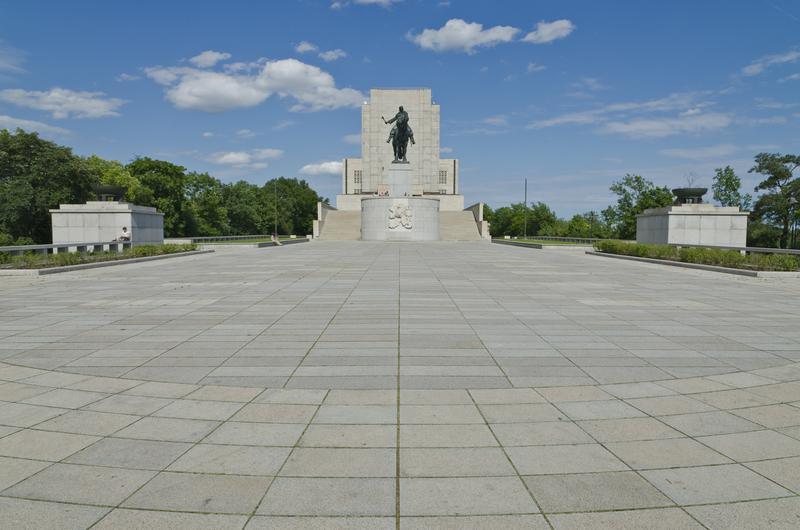A One-Eyed Hero: Jan Žižka
By | April 24, 2019

An unusual war hero from the Medieval age where battles were fought as knights and castles were used not only as homes but as a defensive shield against the enemy. Jan Žižka was not your ordinary leader. He did not fight with shields and armor or even castles. He used ingenuity and skills as that is all he had at that time, but it worked to his advantage.
Jan Žižka was born in 1360 in the Kingdom of Bohemia and lived to be 63 or 64. He was a medieval war hero from 1378 to 1424. Losing an eye at a young age, he was nicknamed John the One-Eyed Žižka of the Chalice. Declaring loyalty to the teachings of John Hus, he was an undefeated Czech general over a group who were called the Hussites.

John Hus was a Czech theologian and church reformer during the Bohemian Reformation. Like John Wycliffe, Martin Luther, and others, his teachings had a great impact on Western Europe. In 1415, he was burned at the stake because of his doctrines that were against the Catholic Church.
The first battle that Žižka fought in was the Battle of Grunwald. The Battle of Grunwald (1410) was one of the most important victories in Poland and Lithuania, as well as one of the largest battles in medieval Europe. This battle was against the Teutonic Knights which included crusaders and mercenaries from Western Europe. Only about 59 out of 270 of the Teutonic knights survived this battle.

The Hussite battles really got underway after an incident in 1419, known as the First Defenestration of Prague, took place. Protestors were there trying to obtain the release of the Utraquists, moderate Hussites. When the councilors refused, things turned ugly and the Hussites threw the town councilors out of the windows of the town hall. King Wenceslaus, who was king of Bohemia at that time, was so shocked by it that he died two weeks later. In an effort to avoid having his brother, Sigismund, who was already King of Hungary, become the next king of Bohemia, Žižka and the other protestors declared war against the Royalists (Sigismund’s supporters).
Žižka quickly organized the crowd of protestors and took over the town hall, creating an army of peasants, farmers, and protestors. Later, during the Battle of Vitkov Hill (1420), Sigismund and his Royalist army came to claim his position in Prague while vastly underestimating Žižka and his “army,” but he was in for a rude awakening. Trying to protect the hill, Žižka and his small 20+ army rode up to the hill to face off the two massive armies approaching them from different directions and were about to overtake them, when a rumor began to spread that Žižka’s army was not just a group of peasants but the army of “hell.” Soldiers began fleeing, tripping over each and falling as they tried to climb down the steep rocky hill and killing themselves.

Pictured above: In 1955, a movie was made about the life of Jan Žižka.
With his army of peasants and constantly being outnumbered, Žižka was still able to win battle after battle. With the skills of the farmers and craftsmen, they were able to create and use unusual methods for their weaponry and war tactics. Using wagons attached together and custom designed, they were able to defeat oncoming unsuspecting knights who underestimated the impact.
It was during the Battle of Nekmer in mid-1421 that Žižka lost his other eye by being stabbed through his eye. This left him completely blind. Even while blind in both eyes, he was able to finish the battle and win.


Although they were once again victorious in the Battle of Deutschbrod, Žižka’s army was undisciplined, taking booty, and breaking the rules. Žižka did penance, along with his army, as he took responsibility for them. This led to a future document for a military code of ethics which probably brought the end of feudalism and the beginning of democracy. Because of this new code of ethics, there were many that did not agree with these new rules and turned on him, going after him as Sigismund attempted to do. A number of these Hussites, along with Royalist forces, joined together to try to destroy him and regain the authority that they felt they lost.

Above photo: a bronze statue (third largest in the world) was erected for him in honor of his victory on Vitkov Hill.
After a few skirmishes, they ended up at a village called Kostelec near the Labe River. Žižka just did get his forces and wagons into position, before they were totally surrounded and up against the river behind them. There appeared to be no way of escape for them this time. This army against them played it smart (or so they thought) by setting up camp far enough away to avoid being fired upon like Sigismund was at Kutna Hora. During those days they did not fight at night but only in the daylight. After several days, the attacking forces were prepared to launch their final assault the following morning but the next morning, the camp of Žižka was totally empty. Thousands of soldiers and 300 wagons were gone. No one knows what happened. Some of the people of that day suspected some kind of sorcery. After one or two more battles, peace was once again established among the Hussites.
Žižka died in 1424 from the plague but not from a battle. At his request upon his death, his skin was pulled off of him and made into a drum skin because he wanted his army to continue to fight while being led by the beat of his drum.

